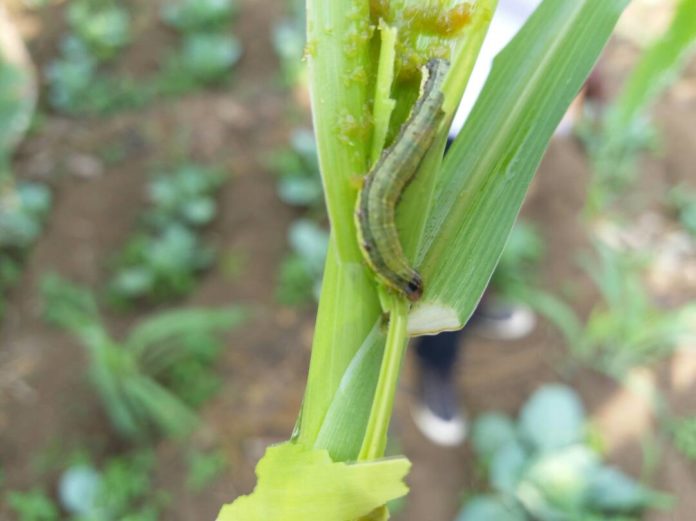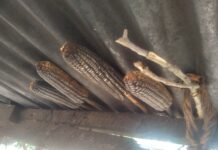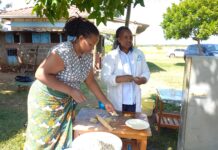By Winnie Kamau
As millions of East African farmers seek to recover from a devastating drought, they face a new threat – the fall armyworm. Reports by Food and Agriculture Organization (FAO) indicate the pest was recently detected in Kenya and is suspected to have entered the country from Uganda. It is also known to be present in Burundi, Ethiopia, and Rwanda.
The fall armyworm was first reported in Western Kenya by farmers in March 2017 and immediately confirmed by the Kenya Plant Health Inspectorate Service and Kenya Agricultural and Livestock Research Organisation. The initial counties infested were Busia, TransNzoia, Bungoma, Uasin Gishu and Nandi.
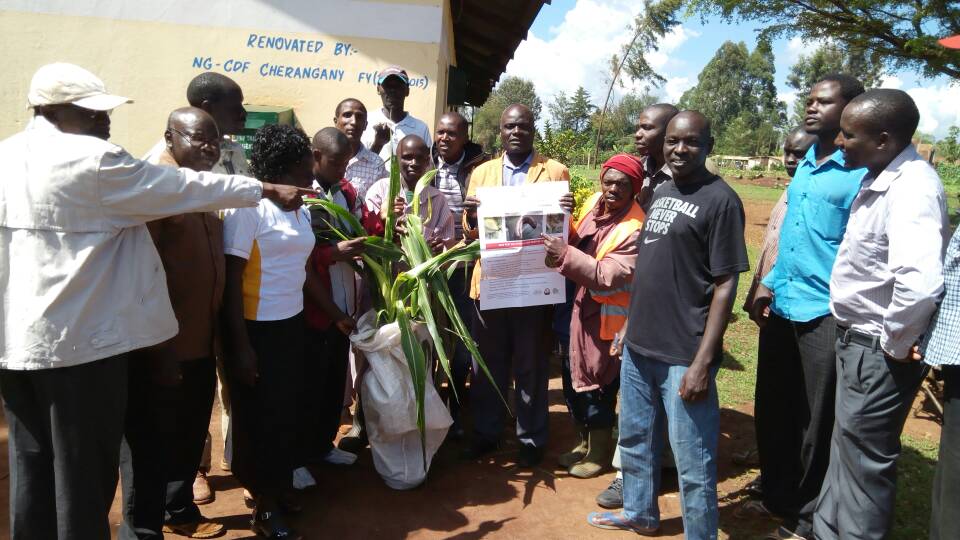
However, the pest has rapidly spread to key maize- and wheat-producing counties, including Kericho, Bomet, and Narok in South Rift, as well as Nakuru and Baringo in Central Rift. Further, there are unconfirmed reports of the presence of the pest in eastern and coastal areas. The major crop currently being ravaged by the pest is maize, which is at various stages of growth, ranging from germination to shoulder-high.
In Kenya, the Government has sought to respond quickly and effectively to prevent an outbreak from dampening prospects for the recently started main cereal-cropping season. With extension service providers and farmers not having much or any knowledge or skills on how to control and manage the fall armyworm, the Government has formed a platform to coordinate development of intervention strategies. However, as yet there are no funds available for implementation. Early this year, the Ministry of Agriculture and Natural Resources of Ethiopia received a report from Mizan Plant Health Clinic, which had intercepted the fall armyworm in five woredas (districts) of three zones – Bench-Maji, Kaffa and Sheka – located in southwestern Ethiopia, where early maize planting begins during January, February and March.
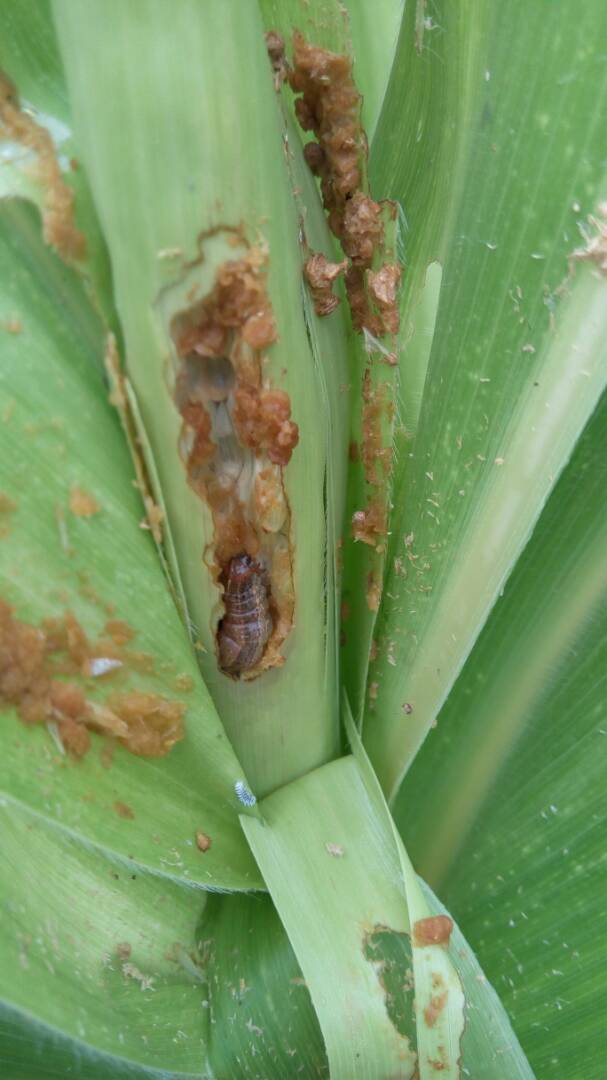
The Horn of Africa is already facing a regional humanitarian crisis, triggered by drought and leading to skyrocketing food insecurity, particularly among livestock-owning communities, with lives and livelihoods devastated across the region.
Today, almost 18 million people in the Horn of Africa are severely food insecure as consecutive seasons of poor rainfall have led to crop failures, widespread pasture and water shortages, reduced opportunities for rural employment, increasing livestock deaths, rising food prices and rapidly diminishing access to food for poor households.
The drought has hit hardest in rural areas, where food security, nutrition, and income generation is largely dependent on local agricultural and livestock production. In Somalia, Kenya, Ethiopia, Djibouti, South Sudan and Uganda, drought has scorched crops and rangelands, dried water sources and led to increasing rates of starvation, disease, and death among livestock.
Families are employing extreme coping strategies to survive, including skipping meals, selling productive assets and the migration or displacement of entire households.
The ongoing planting season represents one of the main opportunities to tackle hunger and protect lives and livelihoods in the region. However, with fall armyworm having a preference for maize and other cereals, an outbreak threatens to further undermine the food security of families that can ill afford another crisis. The pest is known to cause 100 percent crop losses.
There is an urgent need, therefore, to support the county and national governments to halt further spread and damage. Failure to control the pest would result in serious food, economic and social insecurity in Kenya, and indeed in Eastern and Central Africa.

